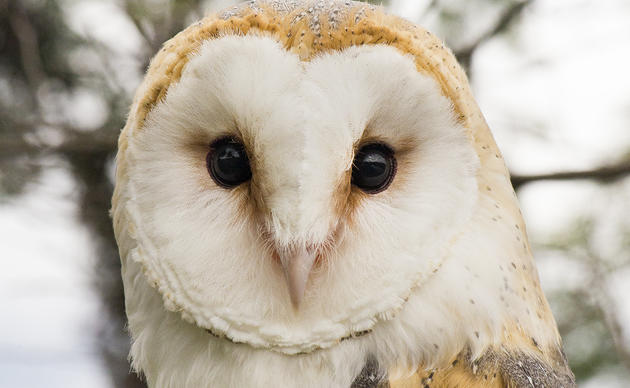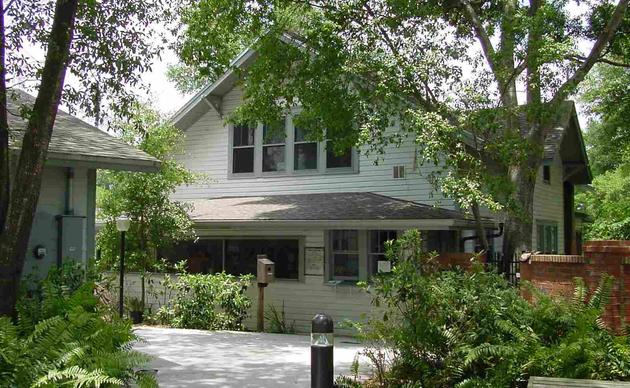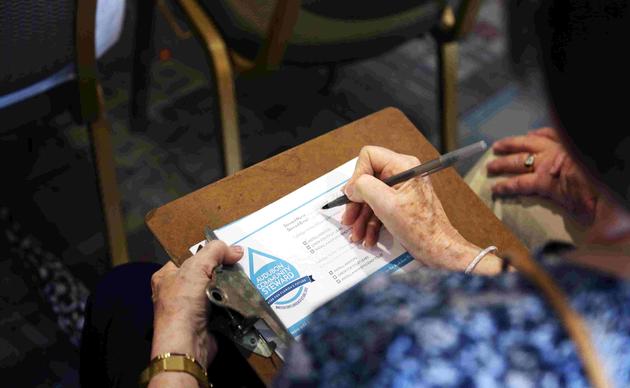June 5 started out as another day volunteering at the Center—until my phone rang. My friend Kaye Lee, who rescues eagles in Jacksonville, needed my help with what would end up as one of the most difficult rescues I’ve ever been a part of: a young eagle had fallen out of its nest and into a marsh deep in a huge wildlife preserve in St. Johns County.
A week earlier, EagleWatch Volunteers Peggy Cook and Stephanie Brice went out to the nest they monitor, SJ028, for their weekly check-in. Much to their surprise, the eaglet that they named “Happy” was out of the nest and perched on a low branch of a bush. At only seven weeks old, Happy was not yet ready to fly, so this was unusual. Peggy, Stephanie, and fellow volunteers Pam and Pat Kleinsasser took turns checking on Happy every other day, but the bird never returned to the nest. Peggy reached out to EagleWatch Program Manager Shawnlei Breeding, who connected her with Kaye.
Eagle Eyes on Eagle Nests
When the Audubon EagleWatch program began in 1992, only 600 documented nests sat scattered across the state. This federally Threatened species was still recovering from the effects of DDT, an insecticide introduced in the 1940s with deadly side effects. At that time every nest counted and each eaglet that fledged successfully was important for the species recovery. For the past 30 years, EagleWatch volunteers have monitored nests, protecting them from disturbance as the population rebounds. Today, there are more than 2,500 nests in Florida, and EagleWatch monitors 1,100 of them. Every eaglet that fledges from these nests is a testament to the species recovery. While DDT may no longer be a threat (it was banned in 1972), the species still faces climate change, increasing storm severity, and habitat loss due to development.
Come On, Get Happy
Back to June 5 – my fellow volunteer Maggie Haynes and I headed up to the preserve to meet Kaye, Peggy, and Stephanie to assist with a rescue. This spring Maggie and I started a volunteer rescue team at the Center to help with Bald Eagle rescues — resources are limited, so we stepped in to help fill a need. Kaye, Peggy, and Stephanie are also volunteer rescuers, so we’re trained to rescue raptors safely and have several years of experience handling wild birds (if you have questions about an injured wild bird, click here—never attempt to rescue these protected birds on your own). We arrived to assist Kaye, geared up and made the mile and a half trek out to the nest on a bike trail in Moses Creek Preserve in search of the eaglet in distress.
After hearing the young bird, Kaye and I made a beeline for the nest, through underbrush so dense we had to cut a path into the marsh. After an hour and a half of searching, we found Happy on a piece of driftwood. I carefully picked Happy up and put a protective hood over her head to keep her calm.
While the journey to rescue this eagle was tough, making the journey back with an eagle in tow was that much more difficult. Another mile and a half back to our cars, and we were headed to the Center for Birds of Prey’s Raptor Trauma Clinic with one extra passenger.
Learning to Fly
Thus began Happy’s rehabilitation journey. With no severe injuries, she spent a couple of weeks in the Center’s Raptor Trauma clinic, and then was moved to the 100-foot flight barn to learn to fly. It was very rewarding to see her flight skills improve each day until she was ready for release.
On Saturday, July 29, Happy returned to the wild. This rescue and release is a collaborative effort of community scientists with eyes in the field collecting data, Audubon volunteers willing to help and the importance of rehabilitation — giving these birds a second chance at life in the wild.
It’s Not Goodbye, It’s (Hopefully) See You Later
As part of a long-term cooperative study through the Audubon Center for Birds of Prey, all rescued Bald Eagle fledglings treated by its Raptor Trauma Clinic receive a colored auxiliary leg band before release. The color designates the type of nest they came from: green bands for natural nests and black bands for nests on man-made structures. Audubon’s goal is to learn if the type of nest structure an eagle hatches in influences the type of nest structure it chooses as a breeding adult. This information will also help in future management and protections for Bald Eagles in Florida.
Happy received leg band K74. Have you spotted a banded Bald Eagle? Make note of the band color, alphanumeric code if visible, and which leg the band is on and report this important information to the U.S.G.S. Bird Banding lab. This data helps researchers track longevity, migratory habits, habitat usage, and other vital population parameters.




